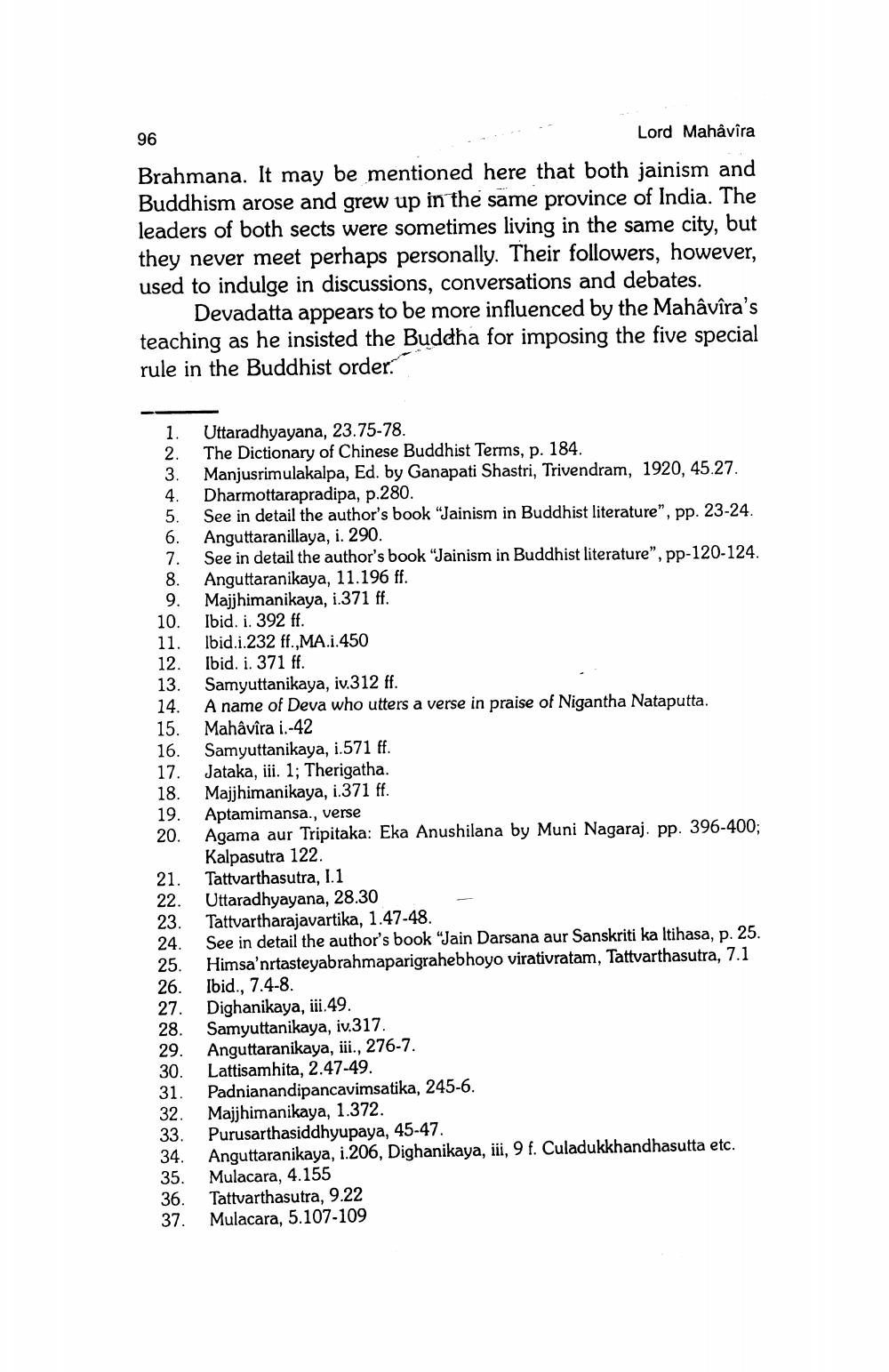________________
96
Lord Mahavira
Brahmana. It may be mentioned here that both jainism and Buddhism arose and grew up in the same province of India. The leaders of both sects were sometimes living in the same city, but they never meet perhaps personally. Their followers, however, used to indulge in discussions, conversations and debates.
Devadatta appears to be more influenced by the Mahâvîra's teaching as he insisted the Buddha for imposing the five special rule in the Buddhist order.
7.
S
Uttaradhyayana, 23.75-78. 2. The Dictionary of Chinese Buddhist Terms, p. 184.
Manjusrimulakalpa, Ed. by Ganapati Shastri, Trivendram, 1920, 45.27. Dharmottarapradipa, p.280.
See in detail the author's book "Jainism in Buddhist literature", pp. 23-24. 6. Anguttaranillaya, i. 290.
See in detail the author's book "Jainism in Buddhist literature", pp-120-124.
Anguttaranikaya, 11.196 ff. 9. Majjhimanikaya, i.371 ff. 10. Ibid. i. 392 ff. 11. lbid.i.232 ff.,MA.i.450
Ibid. i. 371 ff. 13. Samyuttanikaya, iv.312 ff. 14. A name of Deva who utters a verse in praise of Nigantha Nataputta. 15. Mahâvîra i.-42 16. Samyuttanikaya, i.571 ff. 17. Jataka, iii. 1; Therigatha.
Majjhimanikaya, i.371 ff.
Aptamimansai, verse 20. Agama aur Tripitaka: Eka Anushilana by Muni Nagaraj. pp. 396-400;
Kalpasutra 122. 21. Tattvarthasutra, 1.1 22. Uttaradhyayana, 28.30 23. Tattvartharajavartika, 1.47-48.
See in detail the author's book “Jain Darsana aur Sanskriti ka Itihasa, p. 25. 25. Himsa'nrtasteyabrahmaparigrahebhoyo virativratam, Tattvarthasutra, 7.1 26. Ibid., 7.4-8. 27. Dighanikaya, iii.49. 28. Samyuttanikaya, iv.317. 29. Anguttaranikaya, iii., 276-7. 30. Lattisamhita, 2.47-49. 31. Padnianandipancavimsatika, 245-6. 32. Majjhimanikaya, 1.372. 33. Purusarthasiddhyupaya, 45-47. 34. Anguttaranikaya, 1.206, Dighanikaya, iii, 9 f. Culadukkhandhasutta etc. 35. Mulacara, 4.155 36. Tattvarthasutra, 9.22 37. Mulacara, 5.107-109




